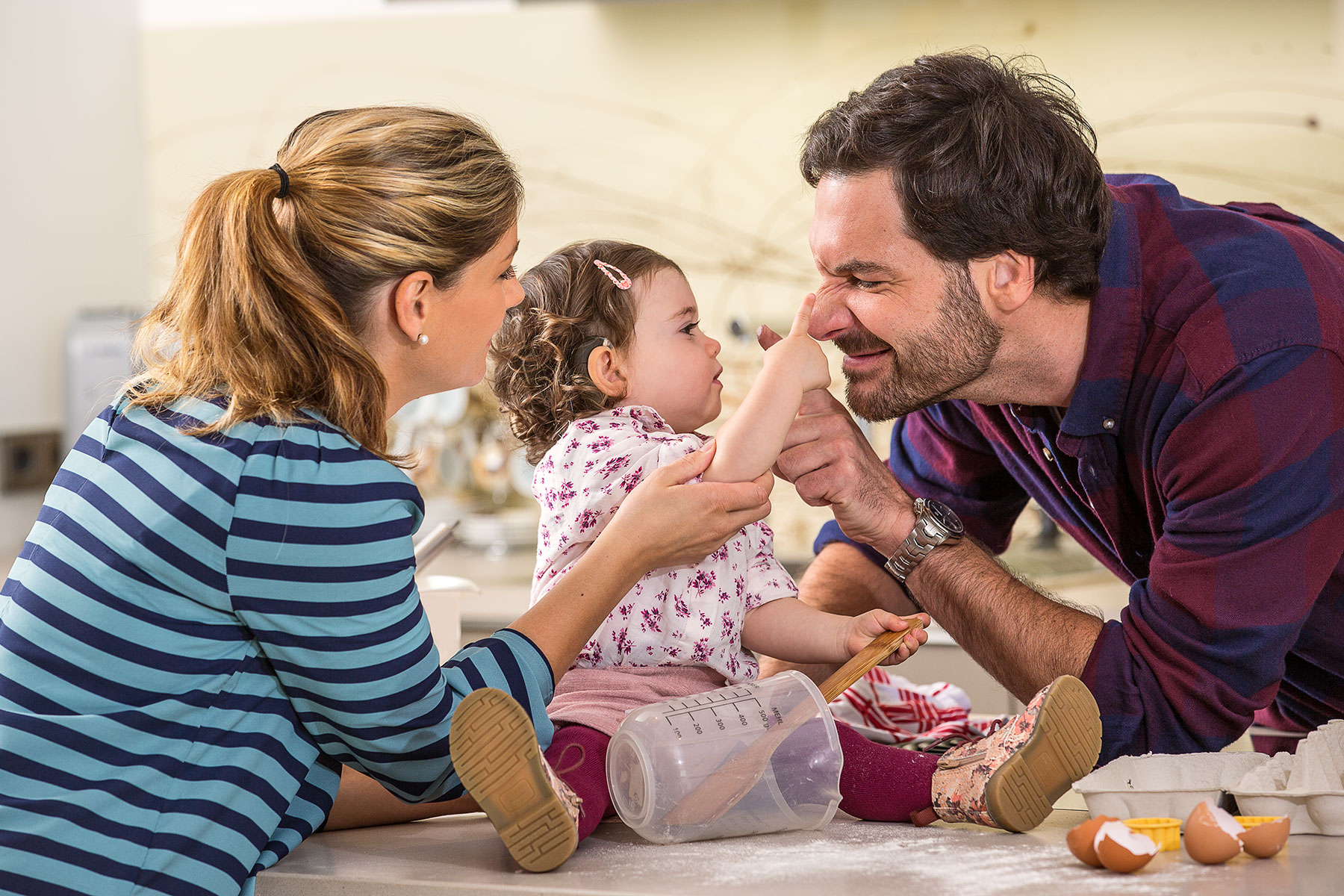MED-EL
Published Aug 28, 2015
2 Great Listening Games: All You Need is a Kitchen

If you’re like many parents you’ll probably spend a lot time in the kitchen, either preparing for meals or cleaning up after them. You can help your child to get the most out of this time by encouraging him or her to play some listening games, like the ones we’ve got below, which can be fun and also help your child develop and build their listening and language skills.
Explore the Kitchen
When you’re getting ready to prepare a meal, invite your child into the kitchen with you. Giving him or her selected access to some of the different utensils in your kitchen is a great way to explore sound in an independent, but structured, way.
Start by filling up a bottom kitchen drawer with some safe kitchenware, like:
- Wooden spoons
- Plastic measuring cups
- Drinking cups
- Small saucepans or pots, with or without lids
- Colanders
Then, let your child go wild!
- Encourage your child to open up the drawer and explore what’s inside.
- Pick out some of the different items and let your child hold them.
- If your child starts making sounds with the items, show enthusiasm—show your child how to make different sounds like banging on different parts of the pot or using the saucepan lids like cymbals.
- When your child is playing always give feedback about the sounds: is it too loud or too soft? Is it a pleasant noise, or an unpleasant one? That way your child will learn about how to describe different sounds.
- Let your child be independent: encourage him or her to play the instruments they want, with the utensils, and to change whenever he or she feel like it.
Setting the Table
Once you or your child has taken out all of the kitchenware before a meal, then you can use some of it to start setting the table.
All you’ll need is what you use to set your table: plates, cups, silverware, food, and so forth.
- How do you normally start to set the table? If it’s with the napkins or place settings, open the drawer with these and encourage your child to grab some. Indicate to your child which ones to get using language. For example, you could say ”We need cups for our drinks. Can you please get the cups out?”
- Talk about where napkins or place settings belong, like saying “These are napkins, and they should go on the table next to the plates!”
- Then continue with the rest of the table setting, by asking your child to grab the plates, forks and whatever else is needed, and bring them to the table. Are there different sized plates? Talk about their differences and what this means for your child, like “The big plates go in the middle, and the small plates go to the side.”
- Encourage your child to try and do everything by him or herself, or to ask you for help if it’s necessary. Remember—pair what you’re saying with the actions that your child is doing. Once the table is set with the kitchenware, look at your child and say “What should we do now? Where is the food?”
- Let your child find the food, whether it’s in the fridge or cupboard, and describe what food you need for the meal. You might either tell them directly or give them just a clue as to where it could be. By doing this you can help them listen to the language and follow instructions.
- Talk continuously through this by saying the names of the different food in phrases, like “You can carry the bread to the table.” Always be combining the relevant actions with spoken meaningful phrases, instead of saying just “take this” or “bread”.
Subscribe to the MED-EL blog to get weekly updates and lots of other great activities like these two.
This post was written with help from Julie Kosaner.
MED-EL
Was this article helpful?
Thanks for your feedback.
Sign up for newsletter below for more.
Thanks for your feedback.
Please leave your message below.
Thanks for your message. We will reply as soon as possible.
Send us a message
Field is required
John Doe
Field is required
name@mail.com
Field is required
What do you think?
MED-EL


